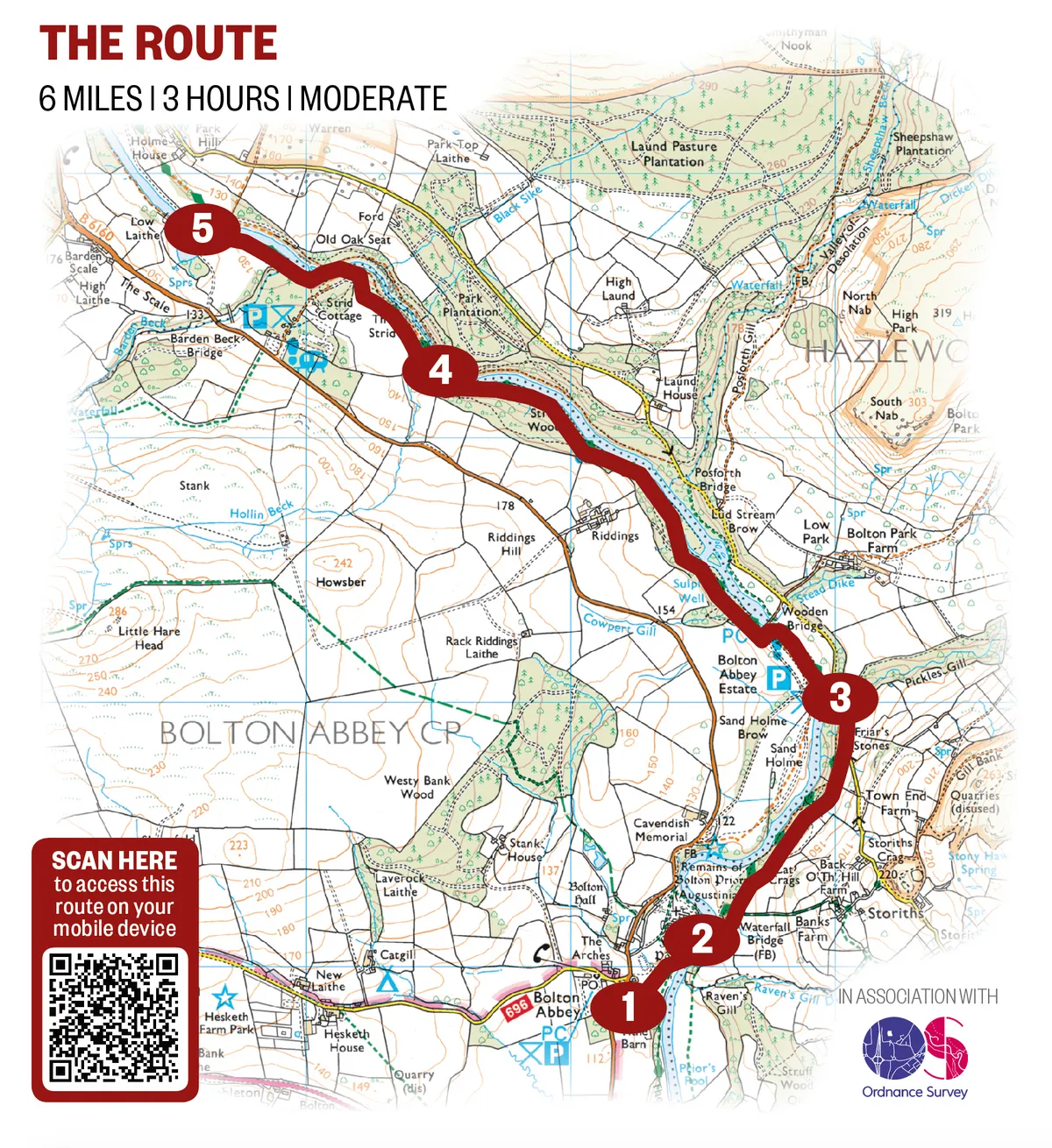The River Wharfe is a waterway of great contrasts and beauty, rising high up in the hills that separate Dentdale from Wharfedale as a busy little steam, burbling over a series of flat limestone ledges. It’s an area of peace and quiet and a good spot to sit and watch dippers diving for insect larvae.
Hemmed in by hills, the river flows through Langstrothdale, past the villages of Yockenwaite and Hubberholme and into Wharfedale. Although broader and calmer than it is further upstream, the Wharfe still has its dramatic moments, such as the surging waterfalls at Linton. The surrounding scenery is just as special: hills topped by the pale outlines of limestone escarpments; picturesque Kettlewell and Grassington that seem to epitomise rural peace; and vast areas of flanking moorland dotted with the remains of a once-thriving lead mining industry. The river itself is unpolluted and famous for its brown trout.
As the water flows to the east, the countryside changes. The limestone-topped hills are replaced by the dark lines of gritstone, marking the edge of Ilkley Moor and Otley Chevin. The river turns north to Wetherby then south again to reach the brewery town of Tadcaster, before eventually flowing into the River Ouse.
Follow our plotted walking route along the River Wharfe and Bolton Priory in North Yorkshire on this moderate six-mile walk.
River Wharf walk
2.9 miles/4.7km | 2 hours | easy
1. Stepping Stones
The walk begins half way along the course at the car park in the village of Bolton Abbey: the name is a bit of a misnomer as there has never been an abbey here, only the Priory. From the village, the route is signposted to the entrance of the estate and the priory ruins.
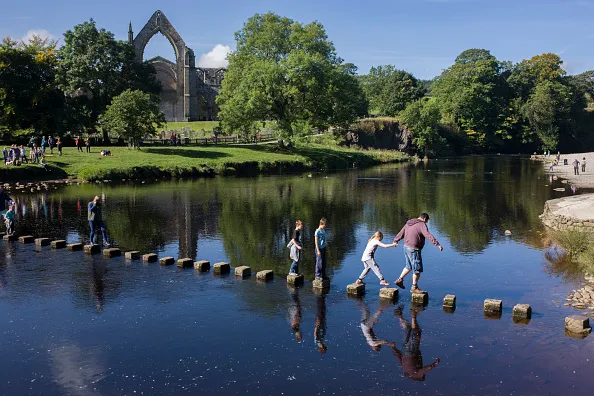
The Priory was founded by the Cistercians in the middle of the 12th century and was gradually extended over the years. Like all the great monastic buildings of England, it fell victim to the great dissolution ordered by Henry VIII, and vast swathes of the estate around Wharfedale disappeared.
As you walk through the grounds, you can see hollows that were once well-stocked fish ponds. The actual Priory church was more fortunate – much of it remains as a magnificent ruin, and the nave was retained as the parish church, as it still is today, though much restored. The former gatehouse, meanwhile, was bought by the Earl of Cumberland who transformed it into the very grand Bolton Hall that still stands close to the Priory.
From the church, a path leads down to the river bank, where walkers have a choice: if they are feeling adventurous, they can cross on the stepping stones; if they don’t fancy risking spending the rest of the day with wet feet, they can take the footbridge.
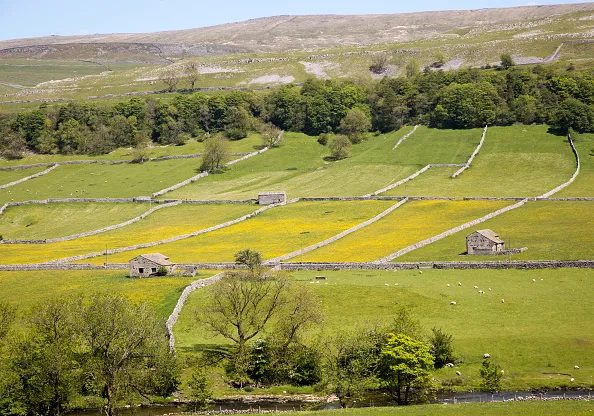
2. Riverside woods
Here the river is dominated by a dramatic rock face that falls vertically into the water. Turn left across the bridge to follow the river stream. A pleasant path leads across grassland, following a line of trees at the foot of the hill to reach a stile. Once across, there is a short climb up a hillock to reach the entrance to the riverside woods. The mixed woodland contains holly and sycamore but is dominated by the sessile oak, easily distinguished from its stouter and more familiar relations by its elongated leaves and stalkless acorns. The route, interlaced with roots, is something of a switchback, taking you up to the top of the hill and the edge of the wood before coming back down again.
3. Turbulence
Where the path emerges by the road, turn left and make your way over the stream either by the ford or the footbridge. Immediately after, turn left to cross the river by the Cavendish Pavilion, an attractive place to stop for refreshments, now or on the return. The route turns right to continue through Strid Wood.
The footpath stays close to the river’s edge as the strong scent of the forest proliferates through the air. The river now becomes very turbulent, racing round a large jumble of rocks.The main stream disappears temporarily behind an island, emerging on the far side moments later as a more placid waterway, the colour of molasses. The scenery becomes ever more dramatic as the valley suddenly narrows and boulders scatter the forest floor.
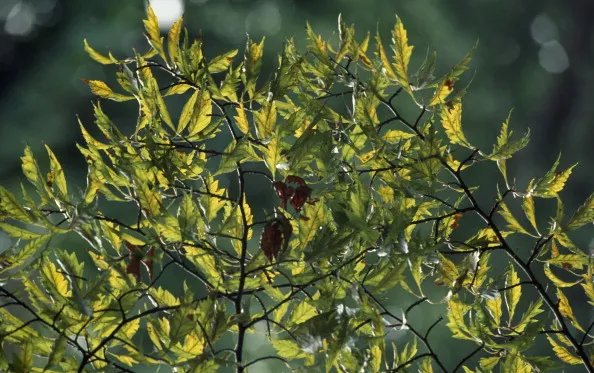
4. The Strid
The River Wharfe reaches a climax at The Strid itself. Here, the water is forced into a narrow channel between the rocky sides, through which it rushes at great force. The gap has tempted many to leap across – and for countless it has ended in tragedy, sucked beneath the churning water to an unfortunate death. A narrow path leads back from The Strid to the main trail, rising above the river with views down to the rocky gorge and, as the trees begin to thin, a wider panorama of moorland up ahead. The path then descends to the water. Cross a small stream over a footbridge and, beyond that, take the stile on to the riverside path.
5. Eastern banks
This brings you to a handsome castellated stone bridge where a glance upstream explains why it is so grand: it can be seen from nearby Barden Tower. The original fortified tower was built in the 11th century and fell into disrepair before being restored by Lady Anne Clifford of Skipton Castle. Today it is largely in ruins again but has lost none of its grandeur.
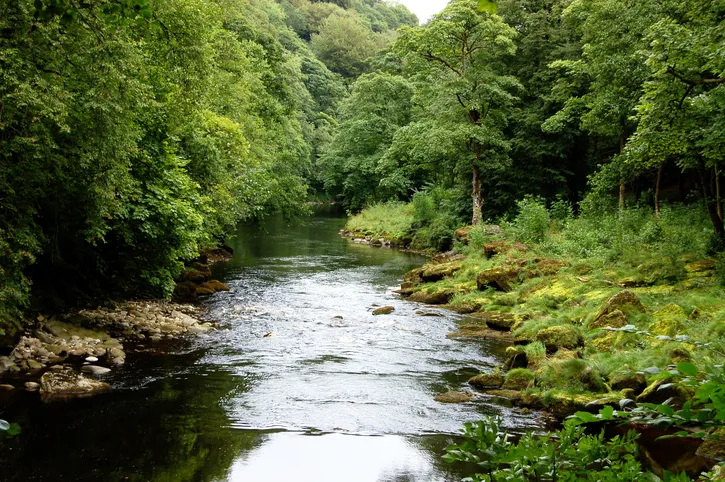
This is the turning point of the walk. You don’t need to retrace your steps – a number of colour-coded nature trails have been laid out in Strid Wood, so you can choose one of these to make your way back to Cavendish Pavilion. From here, instead of crossing the river, continue on the east bank along easy paths back to Bolton Priory.
River Wharf map
River Wharf walking route and map
